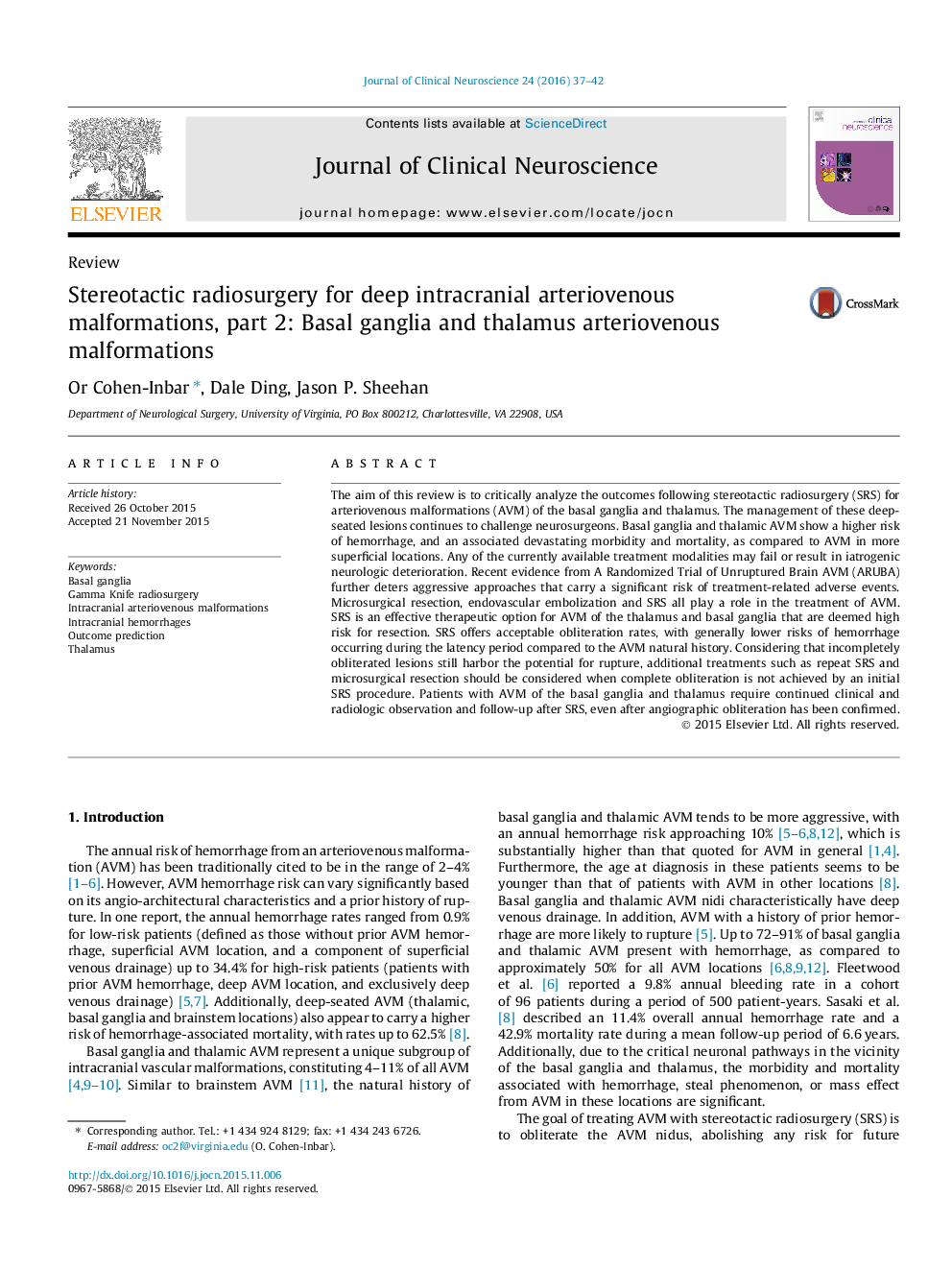| کد مقاله | کد نشریه | سال انتشار | مقاله انگلیسی | نسخه تمام متن |
|---|---|---|---|---|
| 3058757 | 1580292 | 2016 | 6 صفحه PDF | دانلود رایگان |

• Basal ganglia & thalamic AVM show a higher rupture risk compared to other locations.
• Any available treatment modality may yield neurologic deficit, morbidity & death.
• Unruptured AVM have a smaller hemorrhage rate, thus require safe treatment options.
• Stereotactic Radiosurgery has an important role in managing these AVMs.
• SRS offers high obliteration rates with lower risks of latency period hemorrhage.
The aim of this review is to critically analyze the outcomes following stereotactic radiosurgery (SRS) for arteriovenous malformations (AVM) of the basal ganglia and thalamus. The management of these deep-seated lesions continues to challenge neurosurgeons. Basal ganglia and thalamic AVM show a higher risk of hemorrhage, and an associated devastating morbidity and mortality, as compared to AVM in more superficial locations. Any of the currently available treatment modalities may fail or result in iatrogenic neurologic deterioration. Recent evidence from A Randomized Trial of Unruptured Brain AVM (ARUBA) further deters aggressive approaches that carry a significant risk of treatment-related adverse events. Microsurgical resection, endovascular embolization and SRS all play a role in the treatment of AVM. SRS is an effective therapeutic option for AVM of the thalamus and basal ganglia that are deemed high risk for resection. SRS offers acceptable obliteration rates, with generally lower risks of hemorrhage occurring during the latency period compared to the AVM natural history. Considering that incompletely obliterated lesions still harbor the potential for rupture, additional treatments such as repeat SRS and microsurgical resection should be considered when complete obliteration is not achieved by an initial SRS procedure. Patients with AVM of the basal ganglia and thalamus require continued clinical and radiologic observation and follow-up after SRS, even after angiographic obliteration has been confirmed.
Journal: Journal of Clinical Neuroscience - Volume 24, February 2016, Pages 37–42